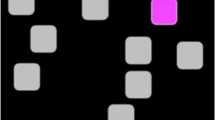Abstract
Motivated by the extensive clinical and experimental evidence that links the cerebellum to cognitive processes, we analyzed the auditory and visual memory of nine children with cerebellar tumors. Five patients had midline lesions and four had cerebellar hemispheric tumors. The patients were tested before and after surgery. One of the patients was also tested at 4 and 24 months after surgery. A third group constituted by four children, sibling of some of the patients, served as control. Statistically significant differences (P< 0.05) were found in the test of auditory memory, in which children with cerebellar tumors made a higher number of errors than their normal counterparts. Surgery performed according standard techniques did not increase significantly the number of errors in any of the tested categories. Location of the tumor (hemispheric vs midline) was not a determinant of the performance of the children. The patient tested up to 2 years after surgery demonstrated a progressive improvement in the performance of visual and auditory memory tasks. Our results provide further evidence that the cerebellum plays a role in the integration of auditory stimuli.
Similar content being viewed by others
References
Akshoomoff N, Courchesne E (1992) A new role for the cerebellum in cognitive operations. Behav Neurosci 106:731–738
Boucher J, Lewis V (1989) Memory impairment in communication in relatively able autistic children. J Child Psychol Psychiatry 30:99–122
Chang C, Housepian E, Herbert C (1969) An operative staging system and megavoltage radiotherapeutic technic for cerebellar medulloblastomas. Radiology 93:1351–1359
Courchesne E, Akshoomoff NA, Townsend JP, Saitoh O (1993) Shifting attention: comparison of autistic and cerebellar patients. Soc Neurosci Abstr 19:1286
Courchesne E, Townsend J, Saitoh O (1994) The brain in infantile autism: posterior fossa structures are abnormal. Neurology 44:214–223
Crispino L, Bulock TH (1984) Cerebellum mediates modality specific modulation of sensory responses of midbrain and forebrain in rat. Proc Natl Acad Sci USA 81:2917–2920
Fiez JA, Petersen SE, Cheney M, Raichle M (1992) Impaired non-motor learning and error detection associated with cerebellar damage. Brain 115:155–178
Fletcher JM, Bohan TP, Brandt ME, Brookshire BL, Beaver SR, Francis DJ, Davidson KC, Thompson NM, Miner ME (1992) Cerebral white matter and cognition in hydrocephalic children. Arch Neurol 49:818–824
Grafman J, Litvan I, Massaquoi S, Steward M, Sirigu A, Hallet M (1992) Cognitive planning deficit in patients with cerebellar atrophy. Neurology 42:1493–1496
Grasby PM, Frith CD, Friston KJ, Bench C, Frackowiak RSJ, Dolan RJ (1993) Functional mapping of brain areas implicated in auditory-verbal memory function. Brain 116:1–20
Huang CM, Liu G, Huan R (1982) Projections from the cochlear nucleus to the cerebellum. Brain Res 244:1–8
Ito M (1990) A new physiological concept on cerebellum. Rev Neurol 146:564–569
Kawamura K, Brodal A (1973) The tecto-pontine projection in the cat: an experimental anatomical study with comments on pathways for teleceptive impulses to the cerebellum. J. Comp Neurol 149:371–390
Lalonde R, Botez MI (1990) The cerebellum and learning processes in animals. Brain Res Rev 15:325–332
Leiner HC, Leiner A, Dow RS (1993) Cognitive and language functions of the human cerebellum. Trends Neurosci 16:444–446
Newman PP, Reza H (1979) Functional relationships between the hippocampus and the cerebellum: an electrophysiological study of the cat. J Physiol (Lond) 287:405–426
Protti E (1983) Brainstem auditory pathways and auditory processing disorders. In: Lasky EZ, Katz J (eds) Central auditory processing disorders. University Park Press, Baltimore, pp 117–139
Sandyk R (1993) Psychotic behavior associated with cerebellar pathology. Int J Neurosci 17:1–7
Schmahmann JD (1993) An emerging concept. The cerebellar contribution to higher function. Arch Neurol 48:1178–1187
Snider RS (1967) Functional alterations of cerebral sensory areas by the cerebellum. In: Fox CA, Snider RS (eds) The cerebellum. Elsevier, New York, pp 322–333
Snider RS, Stowell A (1944) Receiving areas of the tactile, auditory, and visual systems in the cerebellum. J Neurophysiol 7:331–357
Zatorre RJ, Evans AC, Meyer E (1994) Neural mechanisms underlying melodic perception and memory for pitch. J Neurosci 14:1908–1919
Author information
Authors and Affiliations
Rights and permissions
About this article
Cite this article
Lazareff, J.A., Castro-Sierra, E. Preoperative and postoperative analysis of visual and auditory memory in children with cerebellar tumors. Child's Nerv Syst 12, 81–86 (1996). https://doi.org/10.1007/BF00819501
Received:
Revised:
Issue Date:
DOI: https://doi.org/10.1007/BF00819501




